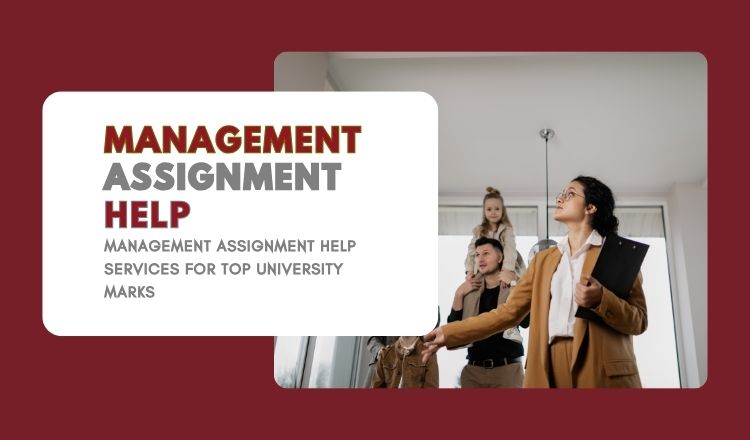If you’re searching for a Mobile App Development Company in San Francisco, you’re already in one of the world’s most innovative tech hubs. From product strategy to launch and growth, the right partner will help you ship faster, reduce risk, and build an app users love. This guide covers what to expect, how to evaluate vendors, typical costs and timelines, and the trends shaping Bay Area mobile products.
A Mobile App Development Company in San Francisco brings deep product experience, access to top-tier talent, and a culture of rapid iteration. Whether you’re validating an MVP or scaling an enterprise platform, the insights below will help you choose with confidence.
Why Choose a Mobile App Development Company in San Francisco?
San Francisco’s ecosystem blends startup speed with enterprise rigor. That combination often translates into stronger UX, smarter roadmaps, and more maintainable code.
- Proximity to innovation: You’ll find teams who have shipped for VC-backed startups, unicorns, and Fortune 500s.
- Product-first mindset: Expect discovery workshops, clear KPIs, and iterative releases – not just code delivery.
- Mature engineering practices: CI/CD, automated testing, and observability are the norm.
- Domain expertise: Fintech, healthtech, e‑commerce, SaaS, AI/ML, and logistics are common specialties.
Advantages at a glance
- Faster time to market via cross-functional pods “PM, design, iOS/Android, QA, DevOps”
- Thoughtful trade-offs between native and cross-platform builds
- Strong security and compliance practices for regulated industries
- Access to local talent networks for fractional or dedicated team extensions
Services You Should Expect from an SF Mobile Partner
A capable Mobile App Development Company in San Francisco will cover the entire life cycle – from strategy to scale.
Product Strategy and Discovery
- Stakeholder alignment and goal setting
- User research, personas, and journey mapping
- Competitive analysis and differentiation
- MVP definition, feature prioritization, and outcome metrics
- Technical feasibility and solution architecture
Design and Development
- UX flows, wireframes, and high-fidelity UI design
- Native iOS (Swift) and Android (Kotlin) development
- Cross-platform development (React Native, Flutter) with native modules when needed
- Backend and API development (Node.js, Python, Java, Go)
- Cloud infrastructure on AWS, GCP, or Azure; serverless where practical
- Performance optimization for speed, battery, and offline usage
Quality, Compliance, and Security
- Automated and manual testing (unit, integration, end-to-end)
- Accessibility (WCAG) and localization readiness
- Security best practices: encryption, secrets management, code reviews
- Compliance experience (SOC 2, GDPR, HIPAA) as applicable
Launch and Growth
- App Store and Google Play submission, review guidance, and release notes
- Analytics setup (events, funnels, cohorts) and dashboards
- ASO (App Store Optimization) and experiment design
- Ongoing maintenance, feature sprints, SLAs, and incident response
- Growth loops, A/B testing, and lifecycle messaging
How to Evaluate a Mobile App Development Company in San Francisco
Great outcomes start with the right fit. Use this checklist to shortlist partners.
- Portfolio fit: Do case studies match your domain and complexity?
- Team seniority: Will you get a seasoned PM, design lead, and senior engineers?
- Technical depth: Do they articulate architecture, scalability, and security trade-offs?
- Process maturity: CI/CD, code standards, branching strategy, and documented QA
- Communication: Weekly demos, transparent reporting, and clear risk management
- References: Willingness to connect you with past clients and share outcomes
- Cultural fit: Proactive, collaborative, and comfortable challenging assumptions
- Scalability: Ability to ramp capacity as you grow
- Pricing transparency: Detailed estimates, assumptions, and change control
Smart questions to ask on your first call
- If you owned our road-map, what would you ship in the first 8 – 12 weeks – and why?
- When do you choose native over cross-platform for use cases like ours?
- What risks do you foresee ‘technical, product, regulatory, and how will you mitigate them?
- How do you measure success across MVP, launch, and post-launch?
- Who will be on our day-to-day team, and what’s their seniority?
Asking these questions helps you spot a Mobile App Development Company in San Francisco that thinks strategically rather than just executing tickets.
Costs, Timelines, and Engagement Models
While every project is unique, these planning ranges are typical for San Francisco mobile app developers:
- MVP, single platform, moderate complexity: $80k–$200k, 8–16 weeks
- Cross-platform MVP (React Native/Flutter): $100k–$250k, 10–18 weeks
- Multi-platform, feature-rich product: $220k–$600k+, 4–9 months
- Ongoing development and support: Monthly retainer or time-and-materials
Common engagement models:
- Fixed-scope project: Best when requirements are stable; change requests are managed formally.
- Time-and-materials: Flexible for evolving scope; pay for actual effort.
- Dedicated pod/team: Embedded cross-functional team for long-term growth.
A transparent Mobile App Development Company in San Francisco will provide a written scope, timeline, risks, and a release plan before kickoff.
Tech Stacks and Trends Shaping SF Mobile Apps
Choose a partner who can explain trade-offs – not just list tools.
- Cross-platform acceleration: React Native and Flutter for shared codebases, with native modules for performance-critical features.
- Native excellence: Swift and Kotlin for advanced graphics, hardware integration, or platform-specific polish.
- Cloud-native infrastructure: Containers, serverless, and managed services to reduce ops overhead.
- AI and personalization: On-device ML, recommendations, and privacy-preserving analytics.
- Observability: Crash reporting, performance tracing, and real-user monitoring baked in.
- Security by design: Threat modeling, secure storage, and zero-trust patterns from day one.
A forward-looking Mobile App Development Company in San Francisco will tailor the stack to your goals, budget, and compliance needs.
A Sample Roadmap: From Idea to App Store
Here’s a realistic path many SF teams follow:
- Weeks 0–2: Discovery sprint – user interviews, prototype, success metrics, technical architecture
- Weeks 3–6: Core flows, design system, API scaffolding, and CI/CD setup
- Weeks 7–10: Feature build-out, integrations (payments, maps, auth), analytics events
- Weeks 11–12: Hardening – QA, performance tuning, accessibility, security review
- Weeks 13–14: Beta, UAT, app store submissions, marketing coordination
- Post-launch: Iteration based on analytics, A/B testing, and roadmap expansion
This phased approach helps a Mobile App Development Company in San Francisco reduce risk and ship value early.
Local vs. Remote: Does Proximity Matter?
While many teams operate effectively in hybrid or fully remote modes, a local partner offers advantages:
- In-person workshops for faster alignment
- Better availability for Bay Area stakeholder schedules
- Access to local user testing cohorts
That said, plenty of San Francisco firms run distributed delivery exceptionally well. Ask about their collaboration toolkit, cadence, and how they keep stakeholders aligned.
Frequently Asked Questions
How many developers do I need for an MVP?
Most MVPs run with a lean pod: 1 product manager, 1 designer, 2–3 engineers ‘mix of mobile and back end, and shared QA. A Mobile App Development Company in San Francisco can flex this up or down based on scope and timeline.
Should we choose native or cross-platform?
- Choose native for complex animations, heavy device APIs, or when platform-specific polish matters most.
- Choose cross-platform for faster time to market across iOS and Android with a shared codebase.
Your partner should present a clear recommendation with trade-offs and long-term cost implications.
Who owns the IP?
You should. Ensure your contract states that your company owns the code, designs, and assets upon payment, and that third-party licenses are disclosed.
How do we measure success post-launch?
Define metrics early: activation, retention, cohort engagement, crash-free sessions, and time-to-feature. A strong partner will set up analytics and dashboards before release.
Checklist: Signs You’ve Found the Right Partner
- They reframe your request into outcomes and user value
- They share a draft architecture and a risk register unprompted
- They propose a milestone plan with demos every 1–2 weeks
- They commit to code reviews, test coverage, and performance budgets
- They provide references that speak to results, not just deliverables
A Mobile App Development Company in San Francisco that hits these marks is more likely to deliver a scalable, user-loved product.
Ready to Build? Let’s Talk
If you’re evaluating a Mobile App Development Company in San Francisco, we’d love to help you scope, prioritize, and build with confidence.
- Book a free discovery call to discuss goals, constraints, and success metrics
- Receive a tailored proposal with timeline, team composition, and budget options
- Kick off a design sprint to validate your MVP with real users



